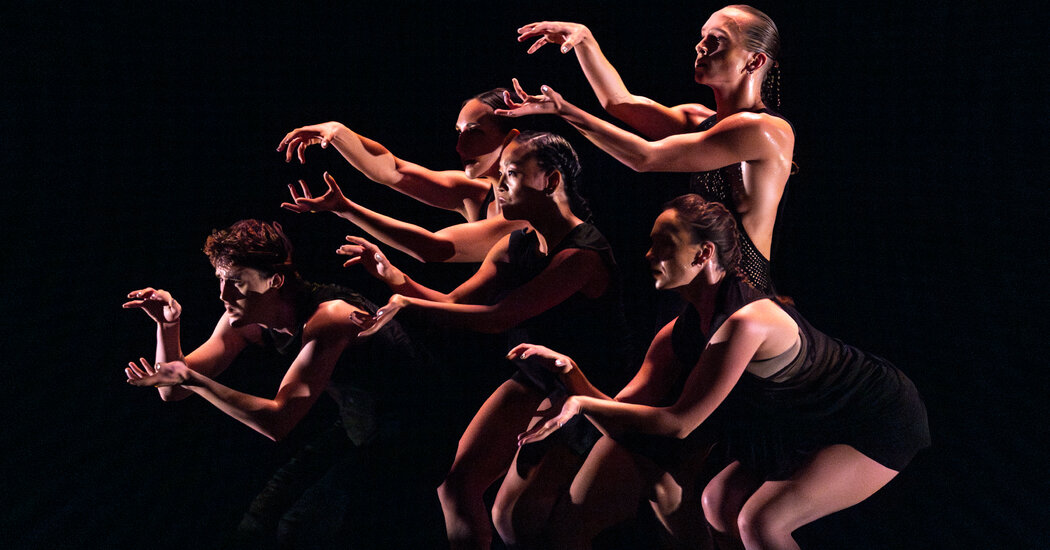Part of the promise of New York City Center’s Fall for Dance festival, now in its 20th season, has been to lure new audiences to dance. In that spirit, Michael Rosenberg, the theater’s new president and chief executive, has been making curtain speeches before this year’s performances, asking first timers in the house to make some noise, then celebrating the big, raucous response as the sound of the future of live performance.
I celebrate that sound too. By keeping ticket prices low ($20 these days), the festival seems to keep bringing people in. But watching the first two of this year’s five programs, I was disheartened by what those people were being shown.
And not for the first time. Along with a welcome variety of styles, the festival’s sampler programs have always featured a frustrating range of quality. Thinking back over the years, I can remember many great performances and happy discoveries but no program that was great all the way through.
A distinguishing feature of Fall for Dance audiences is indiscriminate enthusiasm. So why can’t the festival’s organizers be more discriminating? If the people are going to love everything, why not give them more that’s really good? This year’s choices seem lazier than usual, the principles of selection slightly more mystifying.
To invite Ballet BC to open the first program with Crystal Pite’s “The Statement” (2016) makes some sense, since Pite has an international following. This is one of her pieces in which twitchy, glitchy dancers act like bobblehead dolls as a kind of radio drama plays in voice-over. This story is about a corporate cover-up and boardroom power struggle, and the cynical, cartoonishly knowing qualities of the text are heightened by the choreography.
I find Pite’s spin as misleading and hollow as its target, but the compositional skill and suggestion of ideas at least give the work an appeal, even if it’s false. Côté Danse’s “Dix,” which opened the second program, has no distinct appeal at all. The company is a newish venture by the Canadian ballet dancer Guillaume Côté, and though the music by Son Lux has some grit and spark, the work is in an anodyne contemporary mode that resorts to strobe lights in lieu of kinetic excitement. Contemporary ballet can be stylish, urgent, current. This is a poor substitute.
The closers are no better. Sonya Tayeh’s “Oh Courage!,” on Program 1, made for and performed by Gibney Company, gets some rowdy, revivalist energy from recorded music by the indie-folk duo the Bengsons, but flashes of invention in the choreography get lost in soggy emotion. Why not choose something that’s actually rousing?
To close Program 2, Sergio Bernal Dance Company, from Spain, offers a shallow blend of ballet and flamenco. Trading standard ballet jumps and turns in a Spanish-tinged duet with the American Ballet Theater veteran Herman Cornejo, Bernal basically holds his own, which is impressive if gratuitous. But his flamenco solo is mediocre in passion and rhythm, despite excellent accompaniment by the guitarist Daniel Jurado and the vocalist Roberto Lorente. (Although flown in from Spain, they were perversely supplanted by recorded music for three of the Bernal company’s four lackluster numbers.) Fall for Dance audiences deserve better flamenco than this.
Fortunately, each program had a middle selection saved by a Fall for Dance regular. Sara Mearns, the adventurous New York City Ballet star, joined the tremendous bass-baritone Davóne Tines for the New York premiere of “Mass.” The score, a miniature setting by Caroline Shaw of the traditional mass text which Tines has used to frame recital programs, is slight and short on its own, and the choreography by Bobbi Jene Smith is plain in a hand-to-heart, modern-dance mother-of-sorrows mode. But Mearns and Tines are top-shelf artists, and the sight of her slowly stretching into arabesque as he intones “Credo” is one to inspire belief.
Talent and unpretentious pizazz are what the pianist Conrad Tao and the tap dancer Caleb Teicher delivered in the form of Gershwin’s “Rhapsody in Blue.” Tao plays the hell out of the familiar score while Teicher plays it for vaudevillian comedy in the manner of Bill Irwin and Ray Bolger, keeping up with the rhapsodic shifts with an impromptu-seeming series of frisky responses: frantic Charleston, bouncy self-tripping, splits in which reaching the ground is an applause-earning triumph. But for all the joking around, Teicher never ceases to be musical.
This isn’t groundbreaking. But it’s good and rightly popular. There’s no reason all of Fall for Dance couldn’t be at that level.
Fall for Dance
Through Oct. 8 at New York City Center; nycitycenter.org.


